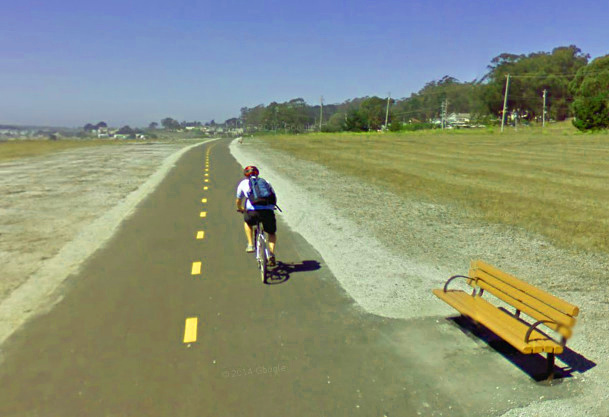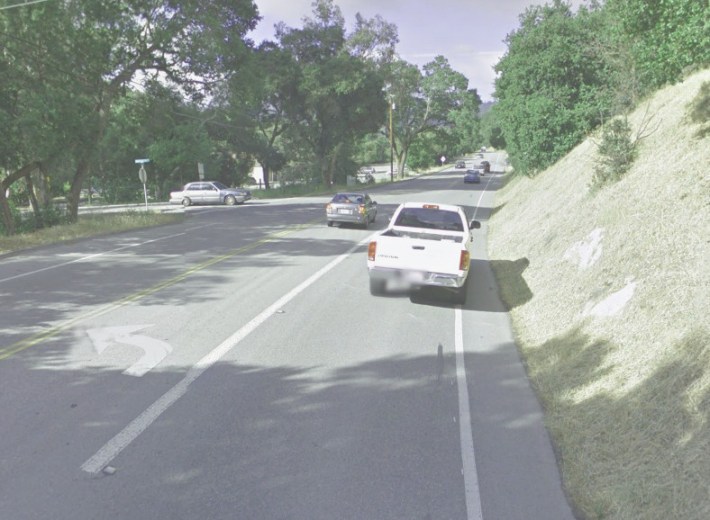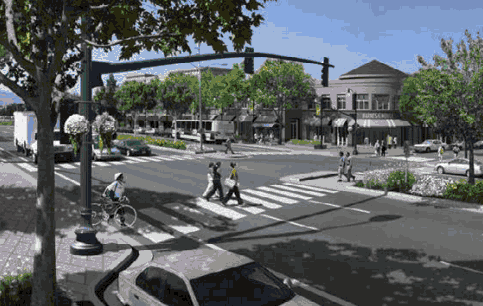San Mateo Bike/Ped Projects Compete for Paltry Funding
5:05 PM PDT on March 18, 2014

Of the 23 biking and walking projects with a hat in the ring for funding from the San Mateo County Transportation Authority's (TA) Pedestrian and Bicycle Program, only ten can be funded with the $5.7 million that's available. And that's the largest funding source for bike/ped projects in the 20-city county. Meanwhile, unnecessary highway expansions are on track to get hundreds of millions of dollars in funding.
The list of ten recommended projects to receive funding was crafted by TA staff and reviewed by the agency's Citizens Advisory Committee and Board of Directors earlier this month. In total, 15 cities had submitted 23 projects amounting to $9.3 million. The projects are competing for a pot of funds drawn from 3 percent of the half-cent Measure A transportation sales tax -- just 1/67 of one cent of every dollar spent on retail sales in the county.
The paltry level of funding means that the TA Board must choose between projects like widening shoulders on Alpine Road in Portola Valley, intended to make room at pinch points for pedestrians and bicyclists; and the Midcoast Multi-Modal Trail, a proposed paved trail that would connect Montara with Half Moon Bay. The shoulder widening project made the recommendation list while funding to plan the Midcoast Trail did not.

On the TA's 100-point ranking system, the Alpine shoulder widening beat the trail project by 0.1 points, though the Alpine project also had strong popular support. If approved by the TA Board at its next meeting on April 3, Portola Valley would use $309,500 in TA funds and $138,000 of its own funds (a 30 percent match) to widen Alpine Road and Portola Road at a number of 500-foot-long "pinch points," where two-foot-wide shoulders that force bicyclists into the traffic lanes would be widened to create a continuous minimum five-foot-wide shoulder.
Leslie Latham, a member of the TA's Bicycle, Pedestrian, and Traffic Safety Committee, told the TA Board that residents gathered roughly 300 signatures in support of the project. "Only 14 percent of them came from Portola Valley. They came from 25 different cities," she said.
Portola Valley Mayor Ann Wengert said that a wider shoulder is critical for safety due to "the huge increase in the number or riders and pedestrians" on the town's streets over the past decade.
Still unfunded, meanwhile, is the Midcoast Multi-Modal Trail, a five-mile paved path for walking and bicycling on the east side of Highway 1 connecting Montara with Half Moon Bay and its existing Naomi Patridge Trail, which stretches for another six miles along the Pacific coast to the south.
"The mid-coast would be connected to Half Moon Bay where the stores are," said Lisa Ketcham, vice chair of the Midcoast Community Council. "Highway 1 is often the only road to get from one village to the next, but most people are not comfortable riding or walking along the shoulder of the highway."
The new trail project was approved by the county's Board of Supervisorsin June 2010, but this is the first time the agencies have sought funding for it. The $500,000 requested would only pay for engineering design and environmental planning of the trail's southernmost phase from Coronado Street in southern El Grenada to Alto Avenue in northern Half Moon Bay. Both design and construction of the remaining three phases of the trail north to Montara would remain unfunded.
"I think this is a very important project for the mid-coast," said TA Board Member Don Horsley, who also serves on the county's Board of Supervisors. "It really does connect all of the villages [south of Pacifica] to Half Moon Bay," he said.

The 12 other projects that didn't make the TA's recommendation list, submitted by eight different cities, included multi-use paths, bike lanes, sidewalks, and pedestrian safety improvements like crosswalk upgrades, curb extensions, and pedestrian-activated flashing lights. These improvements would help make crossing busy arterial streets like El Camino Real and Ralston Avenue safer for people walking and would fill in other significant gaps in the county's discontinuous network of walking and bicycling routes.
Many of the projects that applied for TA funds had previously sought support from Transportation Development Act (TDA) funds awarded by the City/County Association of Governments (C/CAG) in October 2013. The competitive funding landscape means cities typically have to submit applications for the same projects to several different grant programs before they can cobble together enough funds for the pedestrian and bicycle safety projects they want to build.
San Mateo cities will soon compete for statewide funds in the new Transportation Alternatives Program, which isn't actually a new funding source, but combines most of California's existing state and federal walking and bicycling funding programs into a single grant program, explained TA Programming and Monitoring Manager Joel Slavit. Roughly $60 million in the program will be available for the nine-county Bay Area.
The ten recommended TA Measure A Ped/Bike projects will be up for final review at the agency's Citizen's Advisory Committee on April 1 and are expected to be awarded funding at its board meeting on April 3.
Stay in touch
Sign up for our free newsletter



